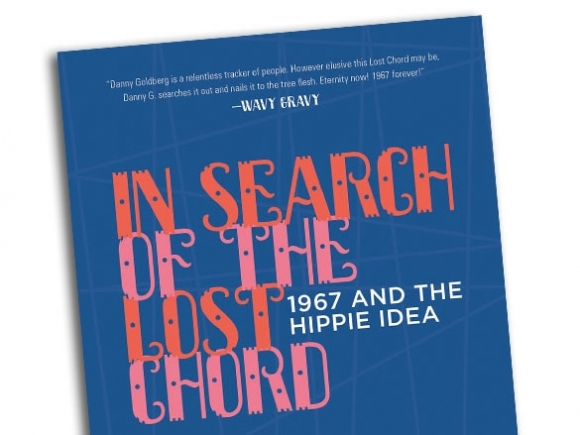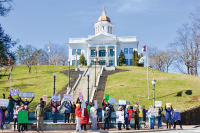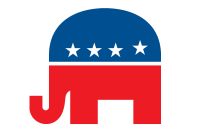Searching for the 60s

If you are one of those people who thinks that the 1960s hippie culture was only about sex, drugs and rock ‘n roll, then think again, as you need to read Danny Goldberg’s new book In Search of the Lost Chord: 1967 and the Hippie Idea. Written by someone who was of age and who was there and a participating observer in 1967 at the height of “The Hip Era,” Goldberg has finally given the American public a truly accurate subjective account of the cultural revolution that went on during the 1960s.
As someone who also was there and who embraced the hippie culture during the 1960s and early 1970s, my reading of Goldberg’s book is that it is spot on. It’s not glorified and nostalgic, and certainly not condescending and dismissive as most books written on the 1960s subculture are these days.
Written in clear congenial prose and in a very orderly and organized fashion with great informative and entertaining detail, Goldberg puts his readers through the paces of the various aspects of the 1960s cultural renaissance/revolution and beyond. Starting in 1966 with the Haight-Ashbury neighborhood in San Francisco followed by chapters on the Media, the Music, Mind and Body Consciousness, the Black Power Movement, the Flower Power and Peace Movements, the Psychedelic Revolution, the Viet Nam War, the Yippie movement, the eventual “Death of Hippie” downfall, then an epilogue summary of where things went right and where things went wrong, Goldberg presents us with nothing less than a college course on the 1960s cultural revolution from a perspective which is both personal and highly researched, including a timeline of key events and news for that era at the end of his book.
Yes, this book is full of the usual suspects, but it is a far cry from the same ole same ole in previous books written about the various aspects of the 60s. Goldberg has done his research and alongside his personal associations with many of the stars of the 60s counterculture he elucidates the issues and the ironies inherent in that decade beginning with a manifesto from the premiere counterculture newspaper, the Oracle, stating “When in the course of human events it becomes necessary for people to cease obeying obsolete social patterns which have isolated man from his consciousness … we the citizens of the earth declare our love and compassion for all hate-carrying men and women.”
The book’s narrative continues with a quote from Allen Ginsberg who says about the Berkeley BE-IN, which more or less launched the hippie movement: “a gathering together of younger people aware of the planetary fate that we are all sitting in the middle of, imbued with a new consciousness, and desiring of a new kind of society involving prayer, music, and spiritual life together rather than competition, acquisition, and war.”
Meanwhile, on the east coast poet-musician Ed Sanders is quoted in the East Village Other (New York’s truly liberal newspaper at the time) as saying: “… a generation that fervently believes that important and long-lasting changes will occur in the United States which would bring free medical care to all … plus an end to war and the growth of personal freedom and good vibes.” And in the July 1967 issue of Time magazine the lead article stated that “Hippies preach altruism and mysticism, honesty, joy, and nonviolence … Their professed aim is nothing less than the subversion of Western society by ‘flower power’ and the force of example.”
Related Items
With these quotes as a prelude and a foundation for the rest of his book, Goldberg cites Henry David Thoreau, Mahatma Gandhi, Aldous Huxley, Gautama Buddha and St. Francis as models and mentors from the past for the hippie generation. A generation that he describes as one that revealed the exhaustion of a tradition of Western, production-directed, problem-solving, goal-oriented and compulsive way of thinking. At the time of the now famous quote created by LSD guru Timothy Leary of “turn on, tune in, and drop out,” Goldberg quotes University of Chicago theologian Martin E. Marty saying “In the end it may be that hippies have not so much dropped out of American society as given it something to think about.” But there was another form of communication in 1967 that touched most of us baby boomers more deeply than all of the underground and mainstream papers and TV shows put together, and it usually involved a guitar.
Having worked inside the music industry for almost four decades (1969-2004), Goldberg gives us a backstage pass to the 60s music scene and its countercultural history. We get to be witness to everything from underground radio to the Fillmore Auditorium in San Francisco and the West Coast psychedelic rock explosion … to the Monterey Pop Festival and the Los Angeles bands … to the folk and rock scene in Greenwich Village in New York … to London and the famous UFO club and, of course, the Beatles.
It’s all there, including great behind-the-scenes stories about the Grateful Dead, Jefferson Airplane, Country Joe and the Fish, Quicksilver Messenger Service, Moby Grape, Steve Miller Blues Band, Big Brother and the Holding Company, Jimi Hendrix, Otis Redding, The Rolling Stones, Cream, Eric Burdon & The Animals, Love, Bob Dylan, Joan Baez, Frank Zappa & The Mothers of Invention, Lovin’ Spoonful, Johnny Winter, John Coltrane, Ornette Coleman, Sun Ra, MC5, J. Geils Band, James Brown, Sonny Terry & Brownie McGhee, Muddy Waters, Electric Flag, The Allman Brothers Band, and the list goes on and on … all adding to the counterculture’s consciousness.
In the wake of the Be-Ins and concerts in 1967, it seemed to many in the hip world (including Goldberg) that the force of agape was sufficient to overcome society’s obstacles and that a utopian vision could meaningfully change mass culture for the better. Hence the coining of the term “Flower Power” and all that this moniker implied. Or as Allan Watts put it: “Western man has lost touch with original intelligence through centuries of relying solely on analytic thinking. Now, with psychedelics and meditation, some are reconnecting with original intelligence and giving birth to an entirely new course for the development of civilization.”
During this time the Eastern religions became more popular in America with a plethora of Indian gurus like the Maharishi, Hare Krishnas, Bhagwan Shree Rajneesh, Swami Satchidananda, and books like the I Ching and Autobiography of a Yogi became mainstream among celebrities and the hippie masses alike. And all of this — the music, the psychedelic drugs, the literature, the Eastern spiritual influences — all fed in to hippie politics and in particular the movement against the war in Viet Nam.
In looking back on the years of the late 1960s, the feminist and political activist Heather Booth adds: “There always have been people working in particular areas like women’s rights, gay rights, the environment, the peace movement, and civil rights, but in my heart, I always felt like it was one movement and I still do.”
Finally, Goldberg speaks about the end of the hippie era, citing the fateful events of the 1968 Democratic Convention in Chicago, the birth of the Yippie culture and political countercultural perspective, The Weather Underground, and the Civil Rights Movement.
Goldberg goes on to conclude that decades later people began to view the late sixties as a time of superficial trends, like the Roaring Twenties, worth remembering primarily for the interesting music and colorful fashions. But finally and appropriately Goldberg quotes one of the 60s cultural heroes: “Moral and spiritual progress usually takes decades or even lifetimes. Hippie skeptic Kerouac said, ‘Walking on water wasn’t built in a day,’ but he didn’t say it could never happen.” It’s been decades since the 1960s and we could sure use a dose of the values, compassion and consciousness that was created back then.
Thomas Crowe is a regular writer for The Smoky Mountain News and is currently writing a personal memoir on the literary renaissance in San Francisco in the 1970s. He can be reached at This email address is being protected from spambots. You need JavaScript enabled to view it.









